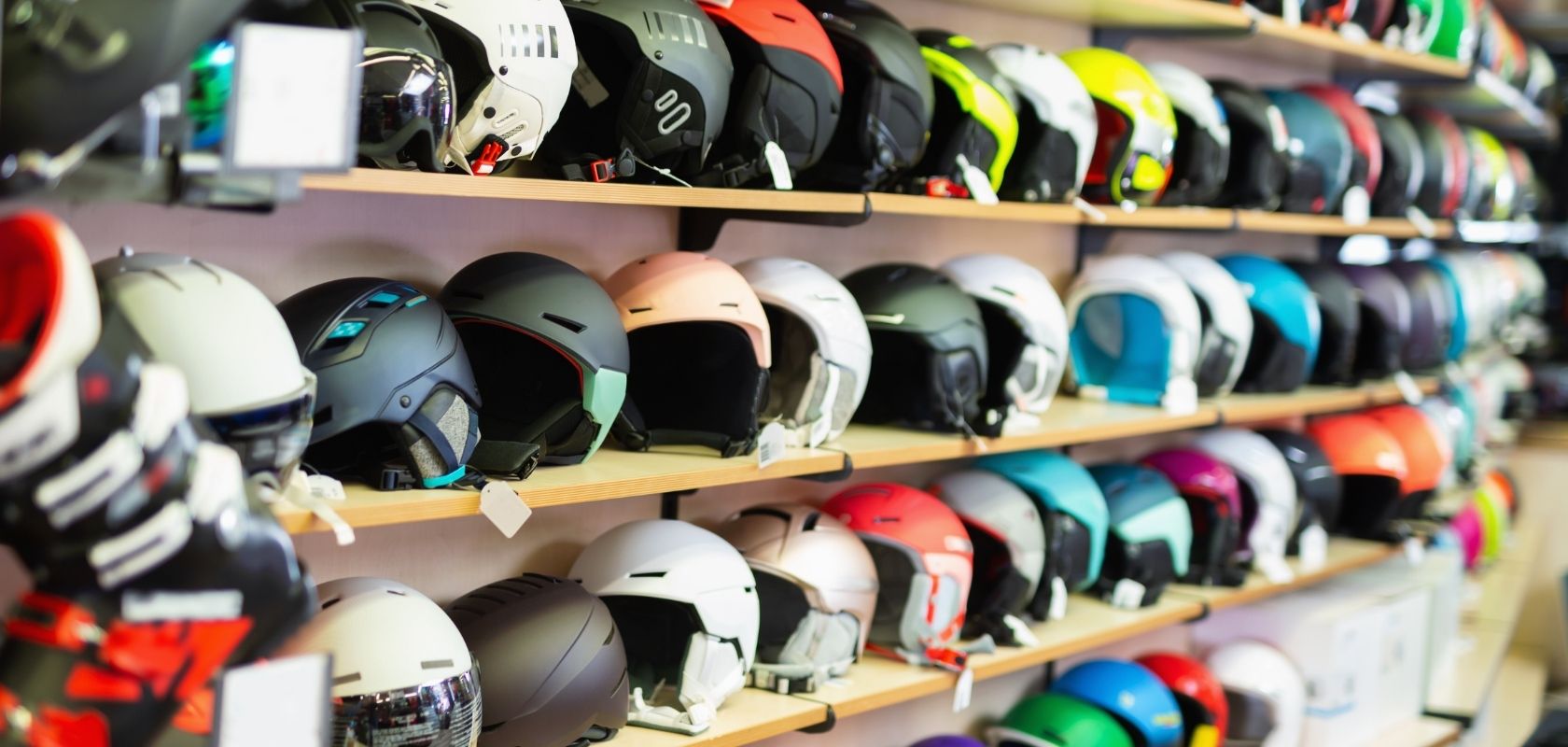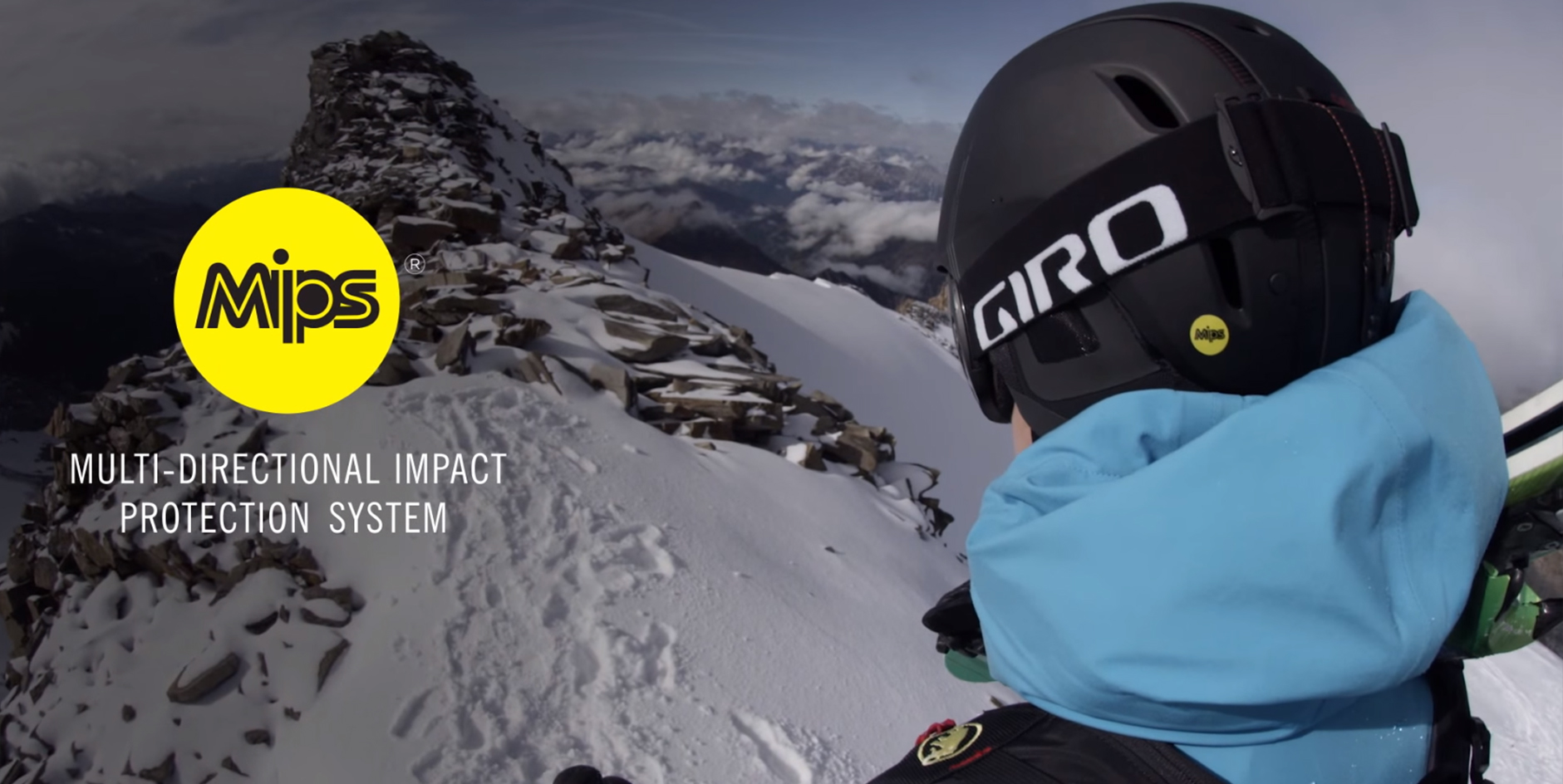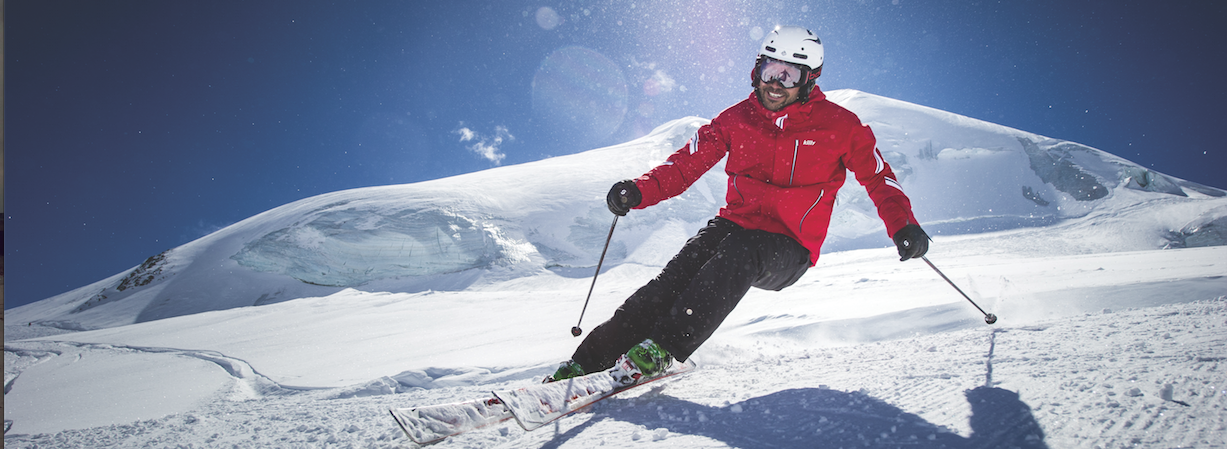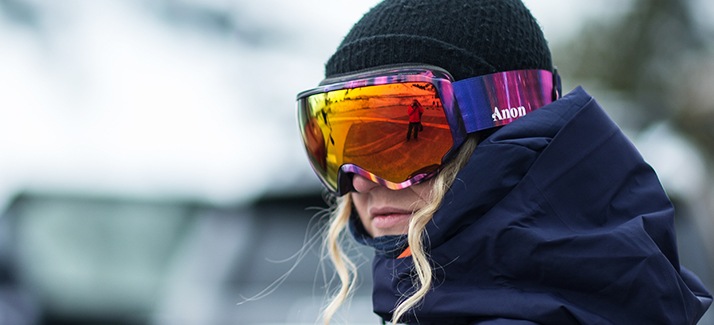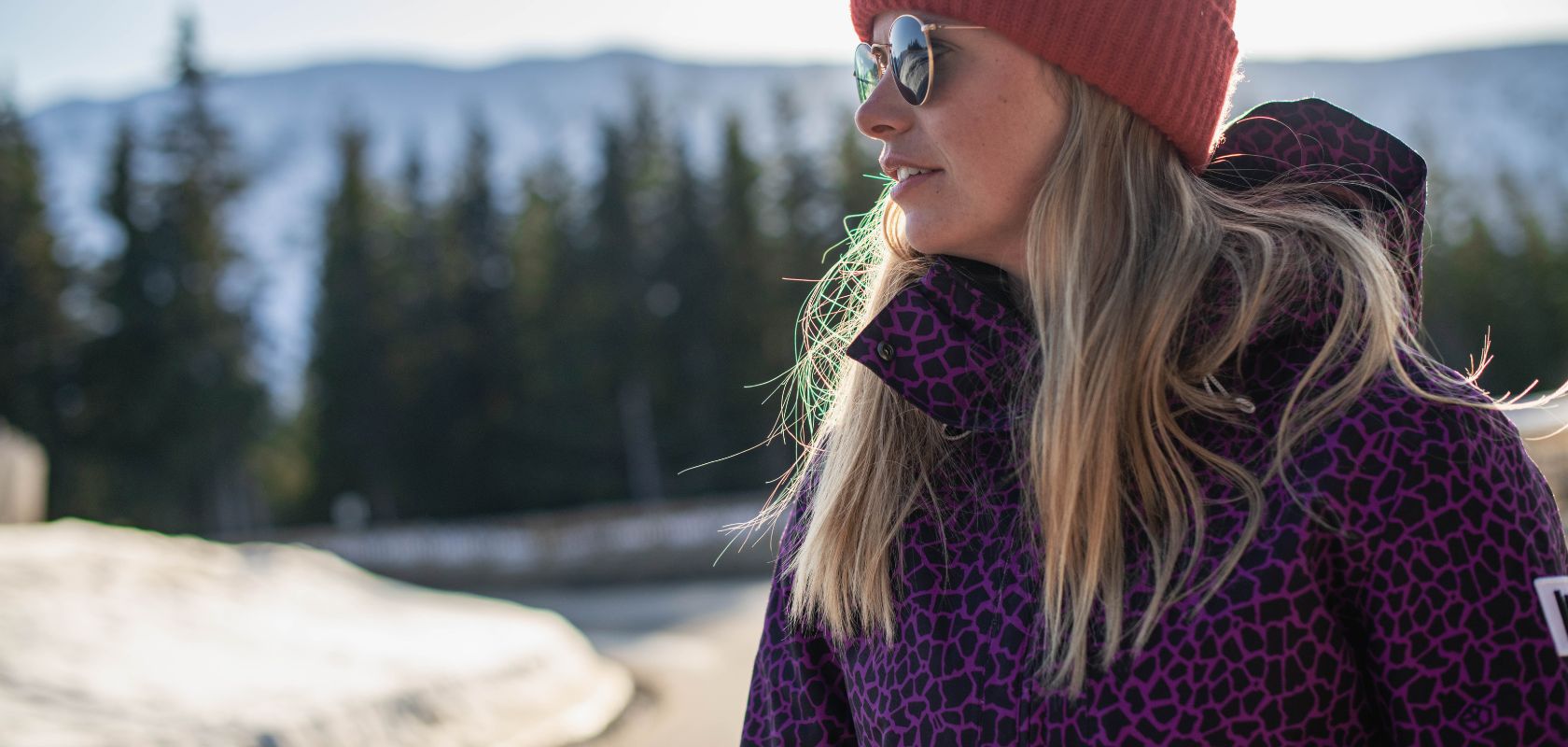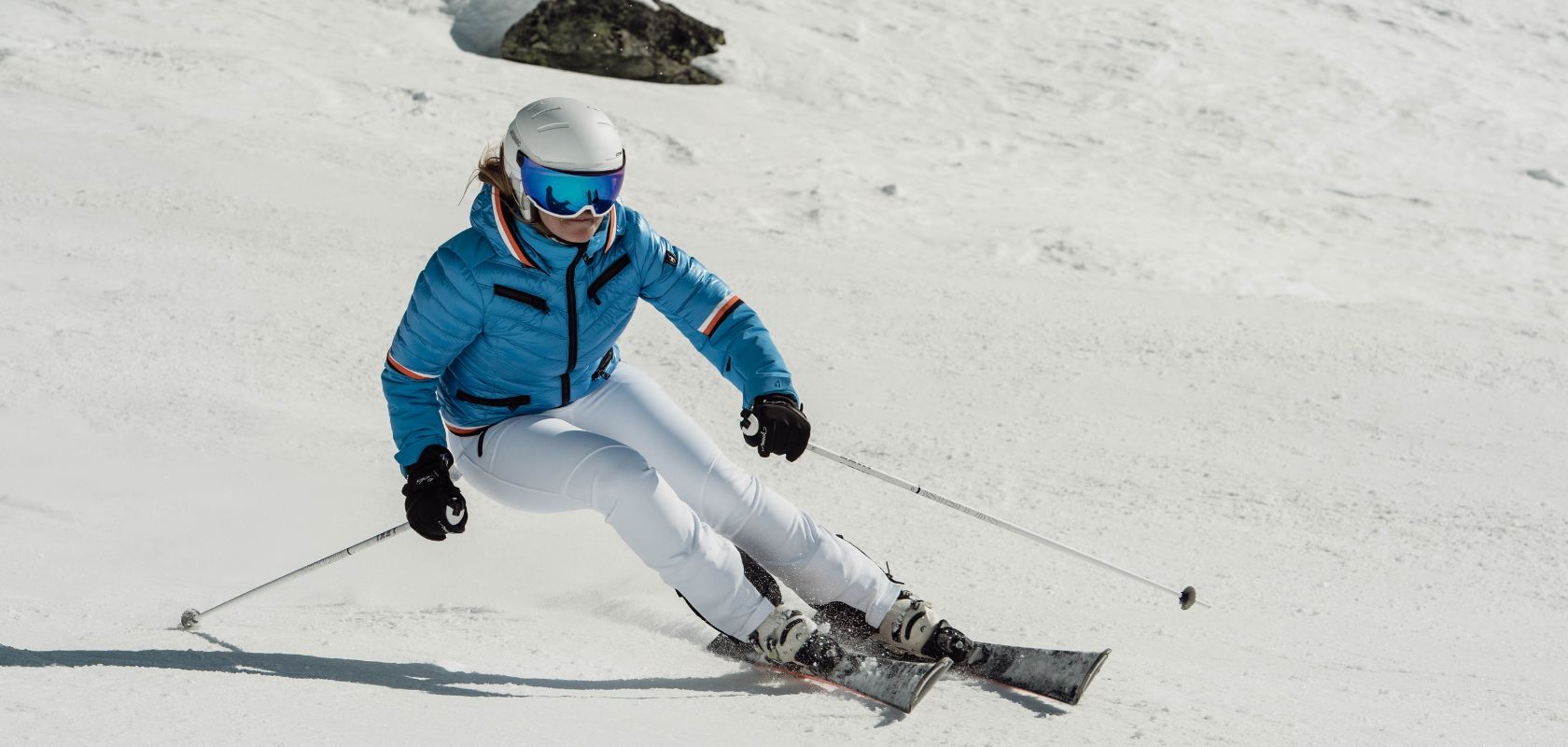How to Choose the Right Helmet
Choosing the right helmet is key for a safe skiing or snowboarding experience, and at some resorts, wearing one is mandatory. Knowing what features to consider in a helmet is essential, ensuring a safe, comfortable experience when you're out on the slopes.
Why Wear A Helmet?
Because, the stats don't lie. Not wearing a helmet puts you at a much greater risk of severe injury, no matter how good a skier you are - most head injuries occur when other skiers crash into you.
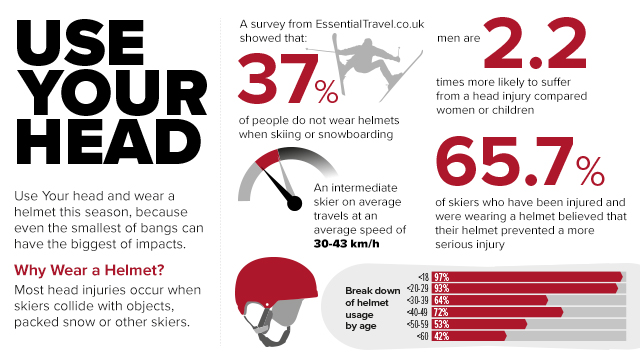
Wearing a helmet while skiing or snowboarding is essential for your safety and peace of mind. Helmets play a crucial role in reducing the risk and severity of head injuries by absorbing and dispersing impact forces during falls or collisions. Studies consistently show that helmeted skiers and snowboarders are less likely to suffer serious head injuries compared to those without helmets.
Modern ski helmets are designed to meet strict safety standards, offering protection without compromising comfort or style. Resorts across the UK and Europe increasingly require helmets, especially for children and young adults. Even if you’re an experienced skier or snowboarder, unpredictable conditions and crowded pistes mean accidents can happen at any time. A helmet is your best line of defence.
Beyond safety, helmets provide warmth and weather protection, helping to keep you comfortable in cold, windy, or snowy conditions. Many models are designed with insulation and ventilation systems to regulate temperature, so you can focus on enjoying your time on the mountain.
What Are the Main Types of Ski and Snowboard Helmets?
There are several types of helmets designed specifically for winter sports, each catering to different needs and preferences:
In-Mould Helmets
In-mould helmets are constructed by fusing a tough polycarbonate outer shell with an impact-absorbing foam liner. This design results in a lightweight helmet that offers excellent protection. In-mould helmets are popular among skiers and snowboarders who prioritise comfort and reduced weight, making them ideal for long days on the mountain.
Hard Shell Helmets
Hard shell helmets feature a separate outer shell and inner foam liner. The rigid shell provides robust protection against sharp impacts, while the foam absorbs shock. These helmets are often favoured for their durability and are a good choice for those who ski or ride in challenging conditions or terrain parks.
Hybrid Helmets
Hybrid helmets combine the best aspects of in-mould and hard shell construction. They offer a balance of lightweight comfort and enhanced durability, making them suitable for a wide range of skiers and snowboarders.
Full-Face Helmets
Full-face helmets provide maximum coverage, including protection for the chin and jaw. These are typically used by racers or those participating in high-speed or extreme disciplines, where the risk of facial injury is higher.
What Key Features Should You Look For in a Helmet?
- Ventilation: Adjustable vents help regulate temperature and prevent overheating.
- Fit Systems: Many helmets offer dial or adjustable fit systems for a customised fit.
- Goggle Compatibility: Look for helmets with a goggle clip and a shape that fits your preferred goggles.
- Removable Liners and Ear Pads: Useful for cleaning and adapting to different weather conditions.
- Audio Compatibility: Some helmets are designed to accommodate audio systems or Bluetooth speakers, perfect for listening to music or communicating on the slopes.
- Safety Certifications: Ensure your helmet meets recognised safety standards (such as CE EN1077 for ski helmets in Europe)
- Weight and Profile: Lightweight helmets reduce fatigue and are more comfortable for extended use, especially for children or those who prefer a minimalist feel. However, don’t compromise on safety for weight alone
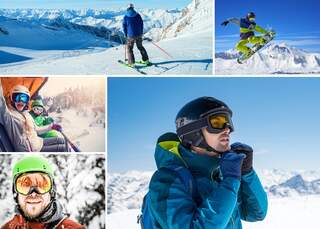
How to Ensure Your Ski Helmet Fits Perfectly
Step 1: How to Measure Your Head for a Helmet
Getting the right fit starts with an accurate head measurement. Here’s a step-by-step guide to ensure you choose the correct helmet size:
- Use a soft tape measure: Wrap it around your head, positioning it about 1 cm above your eyebrows and ears, across the widest part of your forehead.
- Keep the tape level: Make sure it sits evenly around your head, not tilted or angled, for the most accurate measurement.
- Measure snugly, not tightly: The tape should be snug but not compressing your skin.
- Note the measurement in centimetres: Most helmet sizes are listed in centimetres. If you only have a string, wrap it around your head and measure the length with a ruler.
- Account for hair and accessories: If you have thick or long hair, or plan to wear a thin beanie or balaclava under your helmet, add about 1 cm to your measurement.
Helmet sizing varies between brands and models, so always consult the manufacturer’s size chart. For example, women’s helmets often range from XS to M (51–58 cm), while men’s typically cover M to XXL (57–64 cm). Children’s helmets are smaller and designed for growing heads, so re-measure each season.
Step 2: Checking the Fit – What Does a Properly Fitted Helmet Feel Like?
A helmet that fits properly is essential for both protection and comfort. Here’s how to check if your helmet fits as it should:
- Position the helmet correctly: Place it on your head so the front edge sits about one to two fingers’ width above your eyebrows, covering your forehead without obstructing your vision.
- Snug, not tight: The helmet should feel snug all around your head, like a beanie, with no pressure points or gaps.
- Flush to your head: There should be no space between the helmet’s liner and your scalp. If you shake your head, the helmet should move with you, not independently.
- Check the chin strap: Fasten the strap so it’s secure but comfortable. You should be able to fit one or two fingers between the strap and your chin.
- Perform the shake test: Gently shake your head side to side and up and down. The helmet should stay in place and not shift or wobble.
- Test with goggles: Try the helmet with your ski goggles to ensure there’s no gap (“gaper gap”) between the helmet and goggles. The helmet should not push down on the goggles or cause discomfort on your nose.
A helmet that is too loose may move during a fall, reducing its protective capabilities. One that is too tight can cause headaches and discomfort, distracting you on the slopes. If you feel pressure points, try a different size or model.
MIPS Helmet Technology: Advanced Protection
MIPS, which stands for Multi-directional Impact Protection System, is a revolutionary helmet technology engineered to address a critical gap in traditional helmet safety: protection against rotational forces caused by angled impacts. While conventional helmets are primarily designed to absorb linear impacts—those that occur straight on—real-world accidents on the slopes often happen at an angle. These angled impacts generate rotational forces, which can twist the brain inside the skull and are a leading cause of concussions and serious brain injuries.
How does MIPS work?
MIPS technology mimics the brain’s own protective system. Inside the skull, the brain is cushioned by cerebrospinal fluid, which allows it to move slightly and absorb energy from impacts. Similarly, a MIPS helmet features a low-friction layer—usually a distinctive yellow liner—positioned between the helmet’s outer shell and inner padding. During an angled impact, this layer allows the helmet to rotate slightly (about 10–15mm) relative to the head, absorbing and redirecting rotational energy away from the brain. This movement significantly reduces the amount of rotational force that reaches the brain, lowering the risk of traumatic brain injuries.
What are the benefits of MIPS helmets?
- Enhanced protection against brain injuries: By reducing rotational forces, MIPS helmets lower the risk of concussions, subdural hematomas, and diffuse axonal injuries.
- Lightweight and comfortable: The MIPS layer typically adds only a minimal amount of weight, so you won’t notice any extra bulk or discomfort.
- Widely available: MIPS technology is now found in helmets from leading snow sports brands, including Scott, Sweet Protection, Salomon, and POC.
- Proven effectiveness: Studies and independent tests show that MIPS can reduce rotational acceleration by 10–50%, depending on the severity and angle of the impact.
Kids Helmets
If you are looking to kit out your children, you can use the above steps to find the right fit for kids' helmets too - but be aware that younger children may not be able to describe exactly how it feels. Ask whether any spots hurt or are uncomfortable, and never buy a helmet with room to grow. If it’s too big, it’s unsafe. We recommend coming into your local Snow + Rock store to get our experts to fit it for you.
Discover Your Perfect Gear
FAQs
A ski helmet should be replaced after a significant impact or fall, or every 5 years, even if there is no visible damage. The materials can degrade over time, reducing protective effectiveness.
Helmet laws vary by country and resort, but helmets are strongly recommended for all ages. In some countries, like Austria, helmets are compulsory for children and teenagers, while in others, they are not legally required but are still advised for safety.
A properly fitting ski helmet should feel snug but not tight, with no pressure points. It should not move independently when you shake your head, and the chin strap should be secure but comfortable.
Wearing a thick hat or beanie under a helmet is not recommended, as it can compromise the fit and reduce protection. Most modern helmets have warm linings, and thin, helmet-specific liners are best if extra warmth is needed.
Clean the outer shell with lukewarm water and mild soap. Removable padding can usually be washed at 30°C, following the manufacturer’s instructions. Always air dry at room temperature, not on a radiator.
MIPS (Multi-directional Impact Protection System) is a safety technology designed to reduce rotational forces during angled impacts, lowering the risk of concussion. It is a valuable feature for enhanced protection, though not mandatory.
Measure your head circumference just above your eyebrows and ears. Use the manufacturer’s size chart to select the correct size. If between sizes, choose the larger size and adjust for a snug fit.
Yes, helmets are designed with different head shapes and sizes in mind. Women’s helmets may be narrower, men’s wider, and children’s helmets have extra padding and safety features for growing heads.
Related articles

Let us know you agree to cookies
We use marketing, analytical and functional cookies as well as similar technologies to give you the best experience. Third parties, including social media platforms, often place tracking cookies on our site to show you personalised adverts outside of our website.
We store your cookie preferences for two years and you can edit your preferences via ‘manage cookies’ or through the cookie policy at the bottom of every page. For more information, please see our cookie policy.

